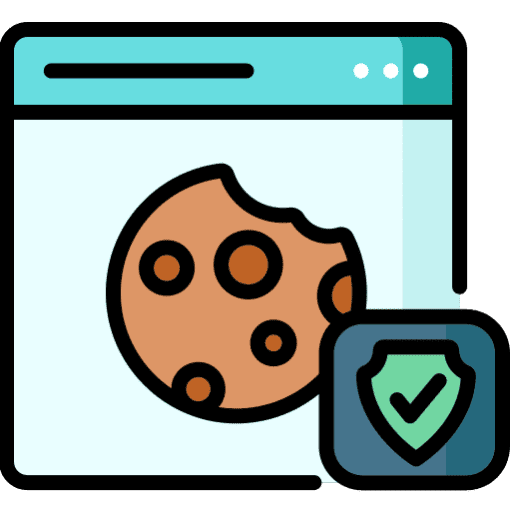As a freelancer, you have unique retirement needs that differ from those of employees. For one, you are likely not offered a 401(k) or other employer-sponsored plan. This means you have to take charge of your own investment and saving strategy. Don’t worry, though – we’re here to help! In this article, we’ll give you tips on how to save for retirement as a freelancer. We’ll cover everything from tax breaks to investment options, so you can make the most of your money and retire comfortably.
One of the best things about being a freelancer is freedom. You not only have that freedom to choose when and how you work, but also how to invest the money that you want to retire at some point in your life. No matter if you’re just starting your career as a solo entrepreneur or have already been freelancing for a while, saving for retirement is a crucial part of financial planning.
There are many different ways to save for retirement, but as a freelancer, you have a few unique options that can help you boost your savings. For instance, you can take advantage of tax breaks by contributing to a traditional or Roth IRA. You can also set up a SEP IRA, which is a retirement account designed specifically for self-employed individuals. If you’re really looking to maximize your savings, you can even open a Solo 401(k). When you operate your business as an LLC or C corporation or even an S corporation, you can actually make contributions to this account as both the employer and employee. This can help you save a significant amount of money each year, much more than any employee can. So use this advantage to your benefit.
When it comes to choosing how to invest your retirement savings, there are a few things to consider. First, think about how much risk you’re comfortable taking. If you’re nearing retirement, you may want to focus on more conservative investments that won’t fluctuate too much in value. On the other hand, if you have a long time until retirement, you can afford to take more risks and invest in growth-oriented assets like stocks.
Another thing to consider is your time horizon. This refers to the length of time you have until you need to access your retirement savings. If you have a long time horizon, you can afford to invest in more volatile assets like stocks, because you’ll have plenty of time to ride out any market downturns. However, if you’re closer to retirement age, you’ll want to focus on more stable investments, like bonds, that won’t lose value in the short term.
Once you’ve decided how to invest your retirement savings, it’s important to start contributing as soon as possible. The sooner you start saving, the more time your money has to grow. If you’re not sure how much you should be saving for retirement, a good rule of thumb is to aim for 15% of your income. However, this may vary depending on your individual circumstances.
If you’re self-employed, you can deduct retirement contributions from your taxes. This can help reduce your tax bill and give you more money to put towards retirement savings. If you’re not sure how much you can deduct, talk to your accountant or tax advisor.
No matter how much money you make, it’s important to start saving for retirement as early as possible. The sooner you start, the more time your money has to grow. By taking advantage of tax breaks and investing in a mix of assets, you can retire comfortably with enough money to support yourself. So start planning for retirement today, and you’ll be on your way to a bright future.
Why you need to take care of your retirement money as a freelancer
As a freelancer, retirement planning can feel like a luxury you can’t afford. After all, there’s always another project to chase and bills to pay. However, if you don’t take the time to plan for your golden years, you could end up struggling financially in retirement. Here are three key reasons why you need to take care of your retirement money as a freelancer:
1. You’re in control of your finances. As a freelancer, you’re used to being in control of your finances. This can be a good thing when it comes to retirement planning, as you can make decisions that are best for your future. However, it also means that you’re solely responsible for ensuring that you have enough saved up for retirement.
2. Retirement planning is essential for financial security. A recent study found that nearly 60% of Americans have no retirement savings whatsoever. If you don’t want to end up relying on Social Security or working into your golden years, it’s essential to start saving for retirement now.
3. You can’t count on employer-sponsored retirement plans. If you’re used to having an employer-sponsored retirement plan, such as a 401(k), you’ll need to find another way to save for retirement as a freelancer. While there are options available, such as Individual Retirement Accounts (IRAs), they may not offer the same level of benefits as an employer-sponsored plan.
By taking the time to plan for your retirement now, you can ensure that you’ll be able to enjoy a comfortable lifestyle when you finally hang up your work gloves for good. Don’t wait until it’s too late – start saving for retirement today.
Retirement planning tips for freelancers
If you’re a freelancer, retirement planning can feel like a daunting task. However, by taking the time to understand your options and make smart financial decisions, you can ensure that you have enough saved up for a comfortable retirement. Here are three tips to help you get started:
Tip #1 Start saving early: The sooner you start saving for retirement, the more time your money has to grow. If you can, start contributing to a retirement account as soon as you start freelancing. Even if you can’t put in the big money (yet) every contribution counts.
Tip #2: Employ the “15% rule”: A good general rule of thumb is to save 15% of your income for retirement. This number may vary depending on your individual circumstances, but it’s a good starting point. If you can, try to increase your contribution percentage each year.
Tip #3 Make the most of tax-advantaged retirement accounts: If your freelance income puts you in a higher tax bracket, contributing to a traditional IRA or 401(k) can help reduce your tax bill. Alternatively, opening a Roth IRA gives you the opportunity to withdraw your money tax-free in retirement.
Tip #4 Diversification: Retirement planning for freelancers isn’t all about saving money – it’s also about investing it wisely. By spreading your assets across different asset classes, you’ll minimize your risk and maximize your chances of achieving your goals. Be smart and use all the asset classes that you understand and have available to you.
Tip #5 Don’t forget healthcare: One of the biggest challenges facing freelancers in retirement is healthcare. Unlike employees, freelancers don’t have access to employer-sponsored health insurance. If you’re not already covered by a spouse or parent’s plan, you’ll need to purchase your own health insurance in retirement. Be sure to factor this cost into your retirement planning.
Tip #6 Create a budget: One of the best ways to get a handle on your finances is to create a budget. By tracking your income and expenses, you’ll be better able to make informed decisions about where to allocate your money. A budget can also help you identify areas where you may be able to cut back in order to free up more cash for retirement savings.
Tip #7 Think outside of the box: There are a number of unique retirement planning strategies that freelancers can take advantage of. For example, some freelancers choose to “downsize” in retirement, selling their homes and moving to lower-cost areas. This can free up additional cash flow to help fund your retirement. There are numerous options out there and , with a little creativity, you’re sure to find a retirement plan that works for you.
Tip #8 Saving doesn’t mean sacrifice: Just because you’re saving for retirement doesn’t mean you have to put your life on hold. There’s no need to deprive yourself – simply make smart choices about how you spend your money. Consider making small sacrifices now, such as eating out less or cutting back on travel, in order to save more for the future.
Tip #9 Use windfalls: If you receive a financial windfall, such as a bonus or inheritance, resist the urge to spend it all. Instead, consider using some or all of the money to boost your retirement savings.
Tip #10 Stick with it: Retirement planning is a marathon, not a sprint. It’s important to stay the course and stick with your savings plan, even when market conditions are unfavorable or you experience financial setbacks. By staying disciplined and committed to your goals, you’ll increase your chances of achieving a comfortable retirement.
Saving for retirement as a freelancer doesn’t have to be complicated or difficult. Just put in some thought and create a strategy with your financial advisor and accountant.
Investing options for freelancers
Freelancers have a lot of options. From traditional investments like stocks and bonds to more creative options like crowdfunding and peer-to-peer lending, there are plenty of ways for freelancers to grow their money. However, with so many choices available, it can be tough to know where to start. Here are a few investment options that freelancers should consider:
-Stocks: Buying stocks is a great way to invest in companies that you believe in and potentially make a lot of money if the stock price goes up. However, stocks can also be volatile, so it’s important to do your research before investing.
-Bonds: Bonds are a more stable investment than stocks, but they typically don’t offer as high of returns. However, if you’re looking for a relatively safe investment option, bonds may be a good choice.
-Crowdfunding: Crowdfunding platforms like Kickstarter and Indiegogo allow you to invest in early-stage companies or products. This can be a riskier investment than stocks or bonds, but it can also lead to higher returns if the company or product is successful.
-Peer-to-peer lending: With peer-to-peer lending platforms like Prosper and Lending Club, you can lend money directly to individuals or businesses. This is typically a fairly low-risk investment, but it can still offer solid returns.
-Gold and precious metals: Gold and other precious metals have traditionally been seen as a safe investment, but their prices can be volatile. If you’re considering investing in gold, it’s important to do your research and understand the risks involved.
-SEP IRAs: A Simplified Emloyee Pension Plan, or SEP IRA, is a retirement account that’s available to freelancers and self-employed individuals. With a SEP IRA, you can contribute up to 25% of your income (up to a maximum of $58,000 in 2021 and $61,000 for 2022) and the money grows tax-deferred until you withdraw it in retirement.
-Solo 401(k)s: A Solo 401(k) is another retirement account option for freelancers and self-employed individuals. With a Solo 401(k), you can contribute up to $20,500 in 2022 ($27,000 if you’re 50 or older). And like a SEP IRA, the money in your Solo 401(k) grows tax-deferred until you withdraw it in retirement.
– Simple IRA: A Simple IRA is another retirement account option that’s available to freelancers and self-employed individuals. With a Simple IRA, you can contribute up to $13,500 in 2021 and $14,000 for 2022. And like a SEP IRA and Solo 401(k), the money in your Simple IRA grows tax-deferred until you withdraw it in retirement.
-Health Savings Account: A Health Savings Account (HSA) is a tax-advantaged account that can be used to pay for medical expenses. And if you’re self-employed and have a high-deductible health insurance plan, you may be eligible to open an HSA. And when you withdraw the money to pay for qualified medical expenses, it’s tax-free.
-Real Estate: Investing in real estate can be a great way to build wealth. No matter if you invest in your own home in order to live in it or you purchase a rental property to generate income, real estate can be a solid investment. Just keep in mind that there are risks involved and be sure to do your research before investing.
As you can see, there are plenty of investment options available for freelancers. And while some investments may be riskier than others, there’s an option out there for every type of investor. So whether you’re looking for a safe investment or you’re willing to take on more risk in order to potentially earn higher returns, there’s an investment option out there for you.
How to make the most of your money when saving for retirement
Now that you have a pretty good foundation and know which options you have, you need to put all this knowledge into a strategy. To make the most of your retirement funds, you need to combine different strategies to create a retirement portfolio.
1. Use tax-deferred growth: With tax-deferred accounts like SEP IRAs, Solo 401(k)s, and Simple IRAs, you can grow your money tax-deferred. This means that you won’t have to pay taxes on the money until you withdraw it in retirement. And since your money will have more time to grow without being taxed, you can potentially end up with more money in retirement. But there are certain thresholds that you need to be aware of. For example, with a SEP IRA, you’re only allowed to contribute up to 25% of your income (up to a maximum of $61,000 in 2022). So if you have a high income, you may not be able to fully take advantage of the tax-deferred growth. After you have exceeded the contribution limit for tax-deferred accounts, you can still grow your money in a taxable account.
2. Get That Free money: Employers often match a certain percentage of their employees’ contributions to their retirement accounts. And while this free money isn’t available to freelancers, there are still ways to get free money for retirement. One way is through a Health Savings Account (HSA). With an HSA, you can make tax-deductible contributions and the money grows tax-deferred. And when you withdraw the money to pay for qualified medical expenses, it’s tax-free. Another way to get free money for retirement is through a Roth IRA. With a Roth IRA, you can make after-tax contributions and the money grows tax-free. And when you withdraw the money in retirement, it’s all tax-free.
3. Employ the power of compounding: Compounding is when you earn interest on your investment earnings. And over time, compounding can have a big impact on the growth of your investment portfolio. For example, let’s say that you start with an initial investment of $100 and earn a return of 12% per year. After one year, you would have $112. And in year two, you would earn interest on your original investment as well as the interest that you earned in year one. So you would have $125.44 at the end of year two. As you can see, the power of compounding can have a big impact on the growth of your investment portfolio over time.
4. Use the cost average effect: The cost average effect is when you invest a fixed amount of money into an investment on a regular basis. By doing this, you’re able to purchase more shares when the price is low and fewer shares when the price is high. And over time, this can help to lower your overall investment costs. For example, let’s say that you want to invest $100 into an investment that’s currently trading at $50 per share. If you were to invest the entire $100 all at once, you would purchase two shares. But if you were to invest $50 per month for two months, you would purchase four shares when the price was $50 and two shares when the price rose to $100. So you would end up with an average cost per share of $75. And over time, this can help to lower your overall investment costs.
The importance of long-term savings strategies
For freelancers, long-term savings strategies are essential for financial stability. Many freelancers live project to project, which can make it difficult to save for retirement or unexpected expenses. However, setting aside money on a regular basis can help freelancers weather lean times and build a solid financial foundation.
One simple strategy is to automatically transfer a fixed percentage of each payment into a savings account. This ensures that money is set aside before it’s spent, and it can help freelancers stay disciplined about saving. Another strategy is to invest in a long-term project, such as a rental property or a small business. These types of investments can provide a steadier stream of income, which can make it easier to save for the future.
By taking advantage of these and other long-term savings strategies, freelancers can secure their financial futures and protect themselves against unexpected financial challenges.
How to stay motivated when saving for retirement
It can be hard to stay motivated when saving for retirement, especially if you’re still a ways off from your goal. However, there are a few things you can do to keep yourself on track.
First, it’s important to set realistic goals. If you’re aiming to retire by a certain age, calculate how much you’ll need to save each month to reach that goal. Then, break down your goal into smaller milestones so you can celebrate each time you reach one. For example, if you’re aiming to save $1 million by retirement, you could set a goal of saving $10,000 in the first year, $25,000 in the second year, and so on.
Finally, remember that your retirement savings are an investment in your future self. Every time you make a contribution to your savings account, you’re one step closer to financial security in retirement. So stay motivated, and keep up the good work.
Take at least 5 minutes each month to look at how your portfolio has developed. The goal is to have a clear understanding of how your money is working for you. This will help keep you motivated to continue saving for retirement.
Tips for building a retirement fund quickly
The best way to save for retirement is to start as early as possible, but that’s not always possible when you’re self-employed. If you didn’t begin saving in your 20s or 30s, don’t despair—it’s never too late to start. Here are a few tips for building a retirement fund quickly as a freelancer:
1. Save consistently. Whether you can afford to put away $50 or $500 per month, make sure you’re saving something every month. Consider setting up automatic transfers from your checking account to your savings account or retirement account so you don’t have to think about it.
2. Invest in a traditional IRA or Roth IRA. If you have a 401(k) through an employer, you may be able to roll it over into an individual retirement account (IRA). Traditional IRAs offer tax-deferred growth, while Roth IRAs offer tax-free growth—both can help you build your nest egg faster.
3. Take advantage of catch-up contributions. If you’re 50 or older, you can contribute an extra $6,000 to your traditional IRA or Roth IRA each year. This can help you make up for lost time and give your retirement savings a boost.
4. Consider other investment options. In addition to saving in an IRA, you may want to invest in stocks, real estate, or other assets that can appreciate over time. Just be sure to diversify your portfolio so you don’t have all your eggs in one basket.
5. Use windfalls wisely. If you receive a bonus from work or come into some money unexpectedly, consider using it to accelerate your retirement savings plan. Just be careful not to dip into your retirement fund prematurely—you want those funds to last throughout your golden years.
Using technology to help with retirement planning
Technology can be both your friend and your foe. On the one hand, there are a wealth of online tools available to help you calculate how much you need to save, track your progress and make changes to your portfolio. On the other hand, if you’re not careful, you can easily become overwhelmed by the sheer volume of information out there – not to mention the constant stream of shiny new gadgets that promise to make your life easier but often end up just collecting dust on a shelf.
So what’s the best way to use technology to plan for retirement? The key is to find a balance that works for you. Use online tools to automate the tedious tasks so you can focus on the big-picture strategy, but don’t be afraid to step away from the computer and talk to a human being when it comes time to make important decisions. Retirement planning is too important to entrust entirely to machines – after all, even the most sophisticated algorithm can’t predict what the future holds. But used wisely, technology can be a valuable tool in helping you achieve your financial goals.
How to get started if you’re just starting out in your freelance career
The thought of retirement might seem like a distant dream when you’re just starting out in your freelance career. But if you want to enjoy a comfortable retirement, it’s important to start saving now. The key is to make your retirement savings automatic, so you’re not tempted to spend the money on other things.
One way to do this is to set up a direct deposit from your checking account into a retirement account such as an IRA or 401(k). You can also automate your savings by setting up a recurring transfer from your checking account to a savings account that you designate for retirement. If you don’t have a lot of extra cash to spare, start small and increase the amount as your earnings grow. The important thing is to get started now, so you’ll be on your way to a comfortable retirement.
If you don’t want to set up automatic payments, simply because you’re living from project to project and don’t know how much you can afford to invest each month, just use a normal savings account for the time being. The most important thing is to get into the habit of saving for retirement so that when you do have more money coming in, you can ramp up your savings rate accordingly.
No matter how small your freelance income might be right now, it’s never too early to start saving for retirement. By taking advantage of compound interest and starting early, you can ensure that you’ll have the resources you need to enjoy a comfortable retirement. So don’t wait – start saving now, and you’ll be glad you did when retirement finally rolls around.
Conclusion
Saving for retirement as a freelancer is different from saving as an employee, but it’s still possible to make your retirement money grow. By following the tips and strategies in this article, you can make sure you’ll have the resources you need to enjoy a comfortable retirement. So get started today, and you’ll be on your way to a bright future.
Do you have any other tips for saving for retirement as a freelancer? Share them in the comments below!
If you’re looking for more information on retirement planning, check out our other articles on our blog.


















